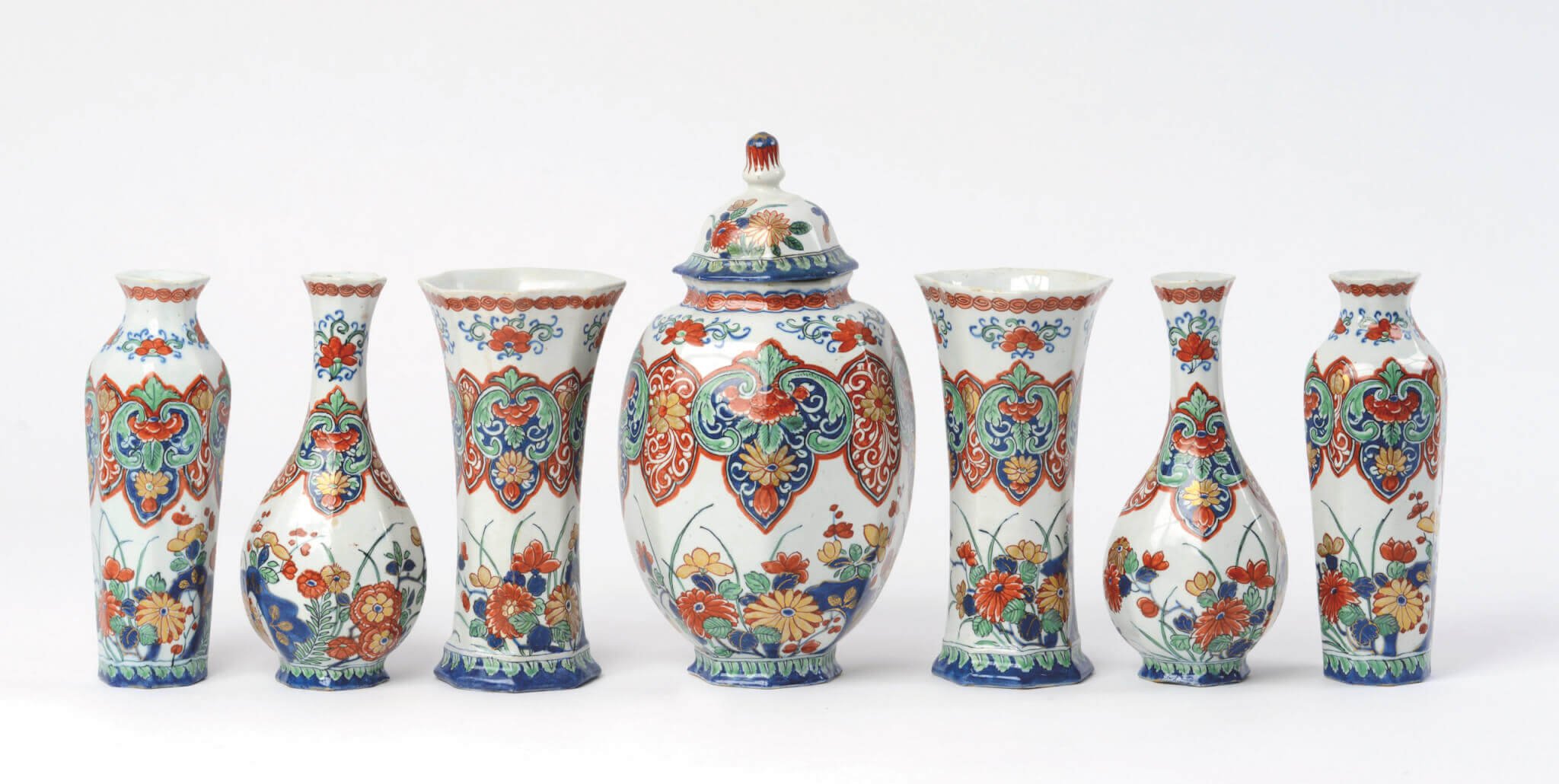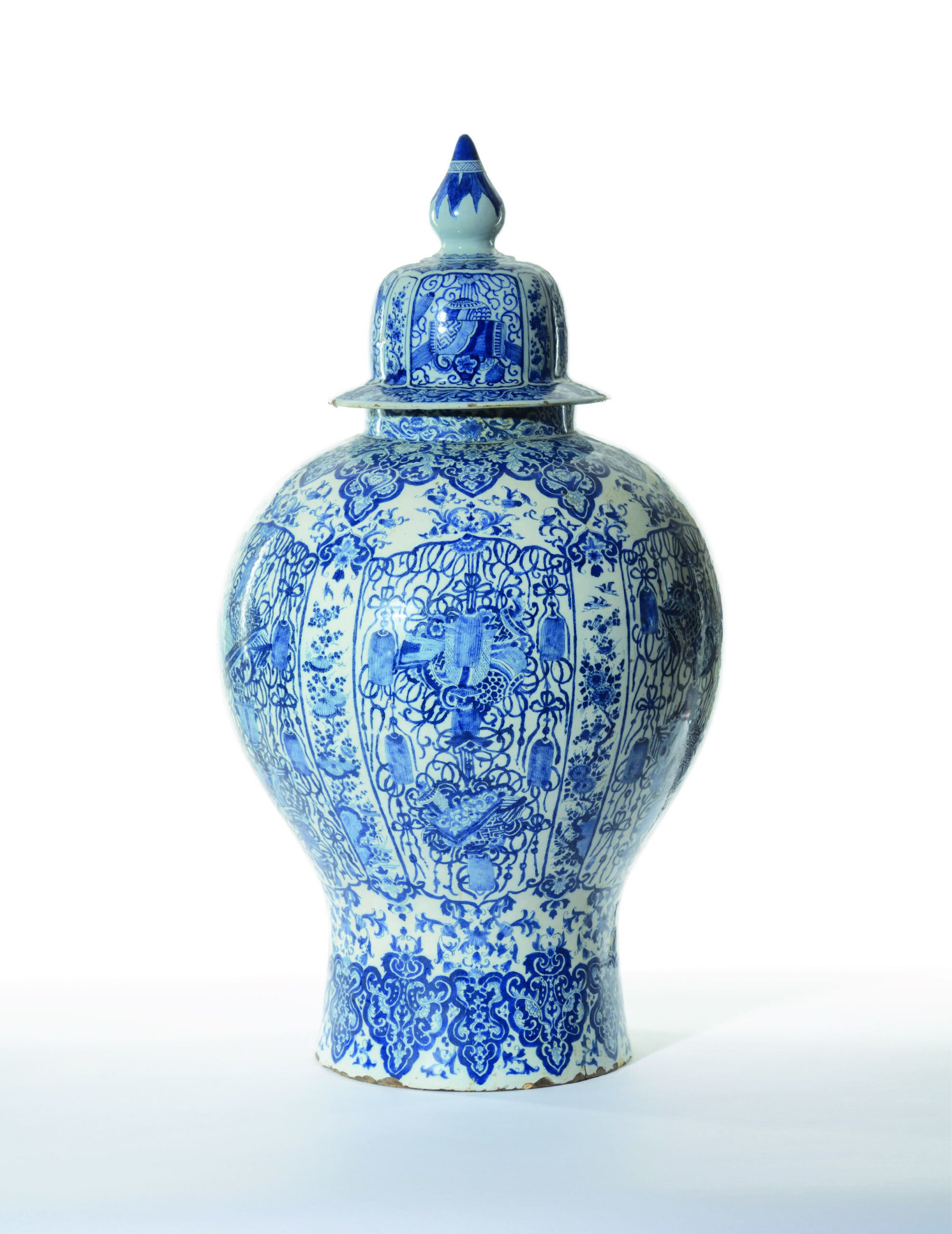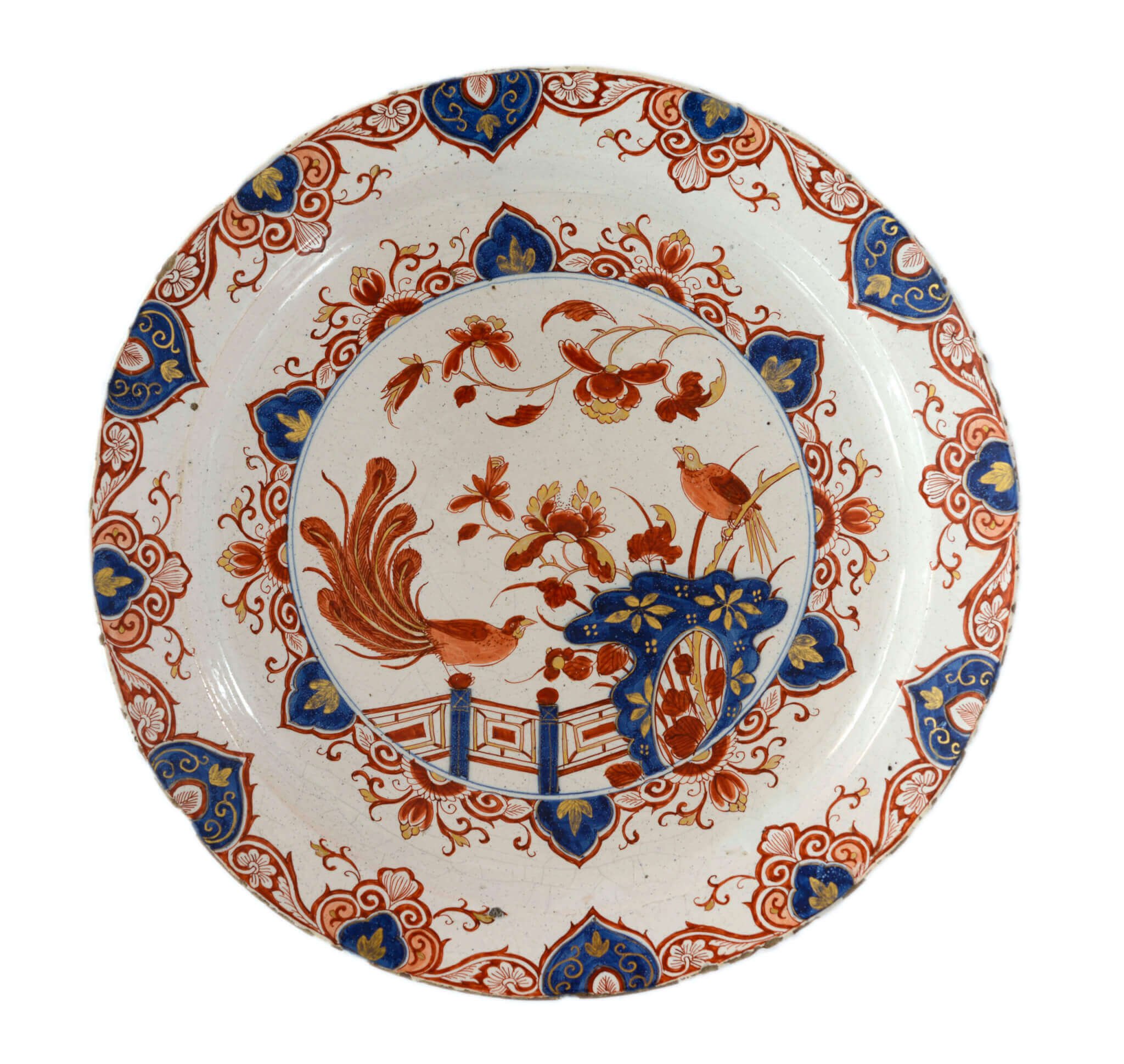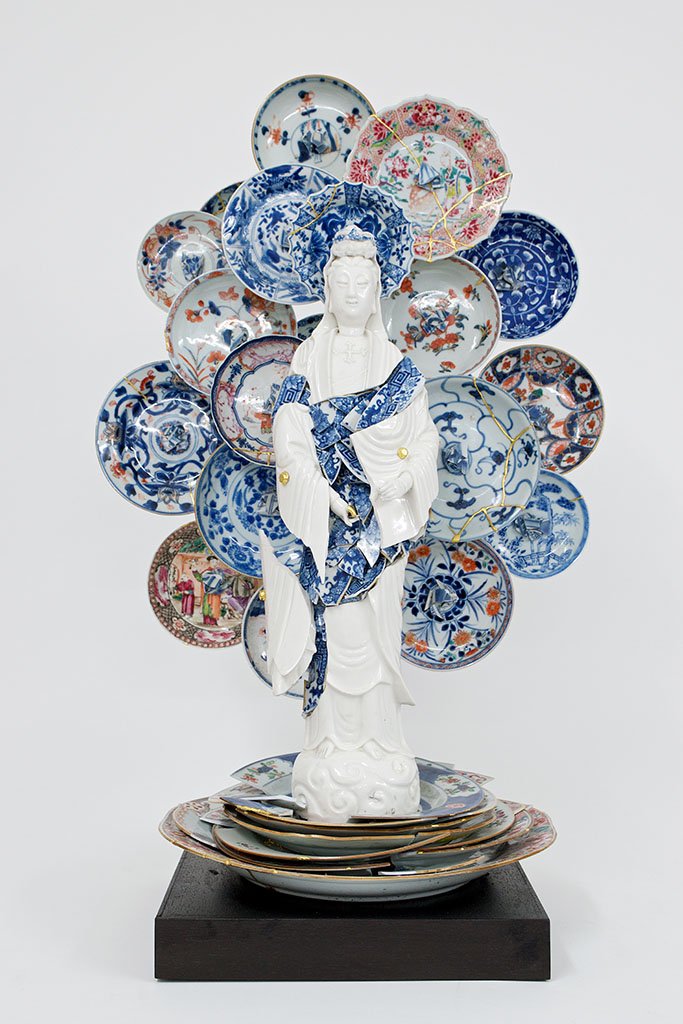The Rich Art and Fascinating Legacy of Dutch Delftware
image courtesy of Aronson Antiquairs of Amsterdam
Since we’ve taken the Netherlands as our current adopted home, we’ve become fascinated by Delftware (and have even opened a design studio turning Delft vases into lamps!). Originally used as the name for fine Dutch tin-glazed earthenware, a type of faience—now used more generally—Delftware is a beautiful art form with a complex lineage and legacy. Many people are familiar with the blue-and-white ceramics, but like most art, there is more than meets the eye as far as its origin and story.
An Introduction to Delft Ceramics
image courtesy of Aronson Antiquairs of Amsterdam
Delftware includes consist tiles, plates, vases, and other dishes made in the 17th and 18th centuries primarily in the city of Delft, in the Netherlands. Although Delftware is famously blue and white (Delft Blue or Delfts Blauw), it can also be multi-colored or polychromatic.
Early Delft pottery originates from the early fifteenth century, during which only very simple pottery was being made—unlike the rest of Europe, which was creating more complex and elegant works, particularly the Maiolica of Italy.
Delftware—or Delfts Aardewerk in Dutch—as we know it is tied to the beginning of the Dutch East India Company in 1602, which brought new and “exotic” influences into Europe. Delftware took off in popularity, and objects were inspired by, and often straightforward direct imitations of, Chinese porcelain.
The rise of Delft ceramic factories took place in the early 17th century, primarily in the cities of Delft and Rotterdam. Throughout the next few centuries, Delftware was a buzzing industry in Europe. Although Delftware was not porcelain, like its Chinese inspiration, it was still regarded as among the finest decorative objects in Europe.
The Direct Link to Chinese and Japanese Ceramics
image courtesy of Aronson Antiquairs of Amsterdam
When talking about Delft ceramics, we must acknowledge the significant influence of both Chinese and Japanese arts.
As mentioned above, the creation of the Dutch East India Company in 1602 heightened Eastern influence in European art. Delftware is a great example of this—the Dutch brought Chinese porcelain with them back from the “Far East.” There, the popular style was that of blue decoration on a white background, and the Dutch were immediately captivated and impressed by the attention to detail and perfect workmanship. Only the nobility could afford the early imports. But after 1620, an interruption in trade with the East led Dutch potters to begin to imitate Chinese porcelain. Since Dutch soil did not have the kaolin needed to produce porcelain, Delftware was created from darker local clay coated in a white-tin glaze that resembled the appearance of porcelain, and also made it much cheaper and easier to produce.
Delftware’s imitation of original Chinese designs would continue from 1620 to the mid-18th-century. As well as their own interpretations of traditional Chinese motifs, the Dutch also started to incorporate some European character through motifs of Dutch life, such as windmills, farmworkers, tulips, and images from the local landscape. Additionally, they introduced biblical and mythological stories to the art form.
The Japanese also contributed to the identity of Delftware. When there was a Chinese shortage of imports in the late 1600s, their island neighbors attempted to fill the trade gap with their own Imari ware. The Dutch quickly started copying this other new influence. These were often gold, red, and blue—differing from the common blue and white—showing a different influence. Works made in the tradition of Imari ceramics became referred to as the Pijnacker* style.
The Legacy of Delftware Today
Guan Yin with a nimbus of saucers, 2019 by artist Bouke De Vries
Especially since the rise of photography and increased globalization, the concept of appropriation has become a ubiquitous discussion in the art world. According to the Tate Modern museum in London,
Appropriation in art and art history refers to the practice of artists using pre-existing objects or images in their art with little transformation of the original.
Some artists, in fact, have proudly (and controversially) built their careers based on appropriating the works and ideas of those who came before them.
However, the concept of appropriation—which is really not much different than simply copying—can be identified in many earlier instances of art history. Delftware is a great example of that, which as we talked about, formed its identity based on Chinese and Japanese imitations.
The history of Delftware perhaps provokes more questions than it answers, and that’s okay. For example, what makes Delftware “Dutch”? Would the massive industry exist if it weren’t for early influence from China and Japan? Is Delftware “original”? And, perhaps most of all, why do these questions matter?
Well, these conceptual queries are really just a basis for all art. Many creatives in history have referenced the concept of imitation versus flattery and borrowing versus stealing. For example, T. S. Eliot said,
Immature poets imitate; mature poets steal; bad poets deface what they take, and good poets make it into something better, or at least something different. The good poet welds his theft into a whole of feeling which is unique, utterly different than that from which it is torn.
This quote illustrates the idea that concepts of originality and appropriation really exist on a spectrum and can’t effectively be talked about in absolutes. Perhaps the initial influence of Chinese porcelain was rather straightforward, but as it evolved to include Dutch scenes and characters, Delftware started to create a history—and therefore identity—of its own.
So, when you’re looking at Delftware and perhaps using it in interior design, you’re not just adding a couple of hundred years of European history to your space—you’re adding a couple of thousand years of Chinese and Japanese history of art. And that’s beautiful, really, that a small household object can have such a rich, albeit complex, lineage.
Now, this legacy serves as inspiration for contemporary artists too. It’s one we’re building upon with our one-of-a-kind handcrafted designer lamps, which bring together contemporary lampshades and cords with antique and vintage Dutch Delft ceramic vases. If you’re curious, come take a look at Amitābha Studio’s gallery!
* Suzanne Lambooy, curator applied art in the Gemeentemuseum Den Haag, writes:
The so-called Imari decor with a decoration in underglaze blue, above glaze red and gold, in Eastern style, is derived from Japanese export porcelain, which was shipped to The Netherlands since approx. 1680, via the harbour city Imari. This pattern was applied in Delft by the Grieksche A factory under supervision of Pieter Kocx (1701-1722, APK mark), on Delft tin glazed earthenware. De Porceleyne Fles took up production again in 1902. By a wrong attribution of the APK mark to Adriaan Pijnacker, this decor became known two centuries later at De Porceleyne Fles as the “Pijnacker” motif.




